Abstract
Roots of Fe-sufficient and Fe-Deficient pea (Pisum sativum L.) were studied to determine the effect of Fe-deficiency on the activity of the root-cell plasmalemma Fe2+ transport protein. Rates of Fe(III) reduction and short-term Fe2+ influx were sequentially determined in excised primary lateral roots using Fe(III)-ethylene-diaminetetraacetic acid (Fe[III]-EDTA). Since the extracellular Fe2+ for membrane transport was generated by root Fe(III) reduction, rates of Fe2+ influx for each root system were normalized on the basis of Fe(III) reducing activity. Ratios of Fe2+ influx to Fe(III) reduction (micromole Fe2+ absorbed/micromole Fe[III] reduced) revealed no enhanced Fe2+ transport capacity in roots of Fe-deficient peas (from the parental genotype, Sparkle) or the functional Fe-deficiency pea mutant, E107 (derived from Sparkle), relative to roots of Fe-sufficient Sparkle plants. Data from studies using 30 to 100 micromolar Fe(III)-EDTA indicated a linear relationship between Fe2+ influx and Fe(III) reduction (Fe2+ generation), while Fe2+ influx saturated at higher concentrations of Fe(III)-EDTA. Estimations based on current data suggest the Fe2+ transport protein may saturate in the range of 10−4.8 to 10−4 molar Fe2+. These results imply that for peas, the physiological rate limitation to Fe acquisition in most well-aerated soils would be the root system's ability to reduce soluble Fe(III)-compounds.
Full text
PDF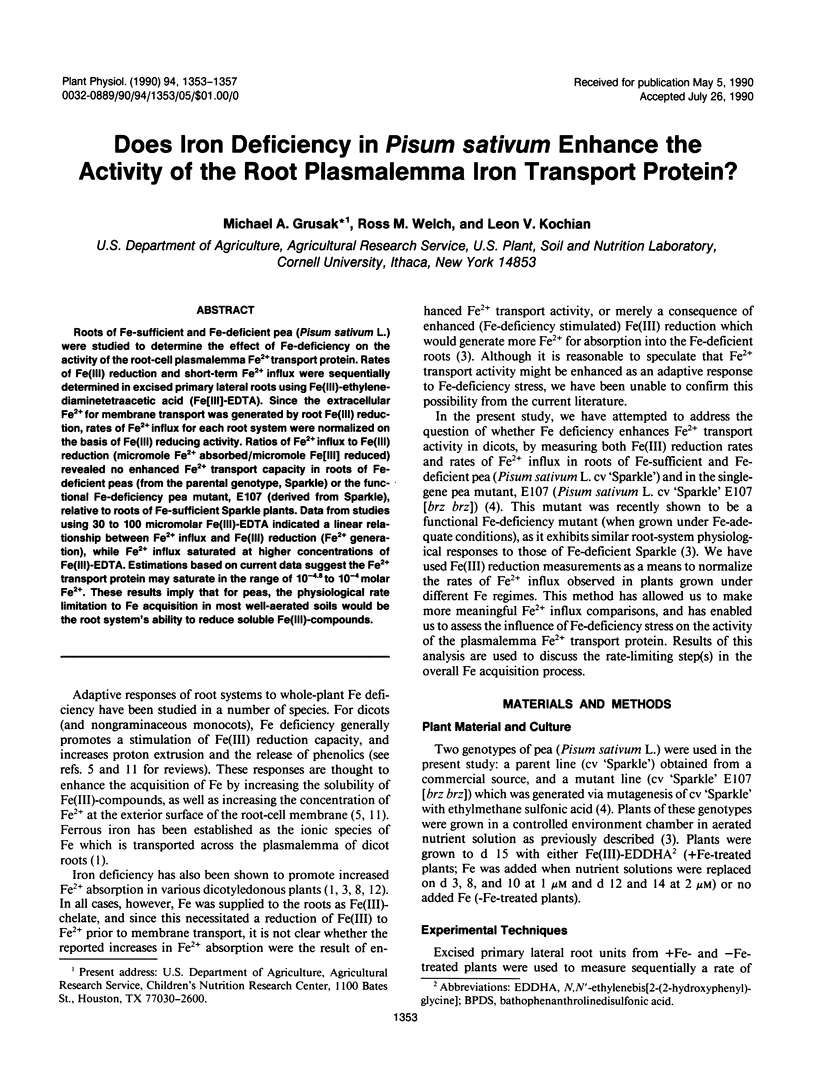
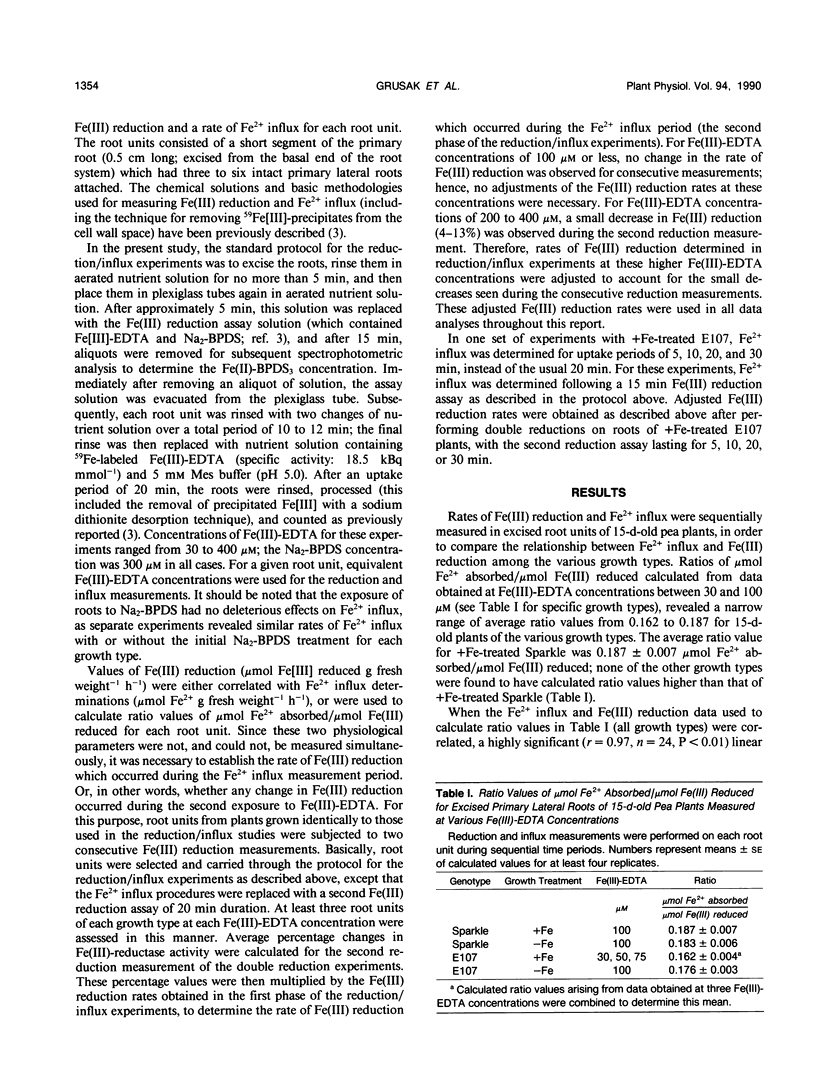
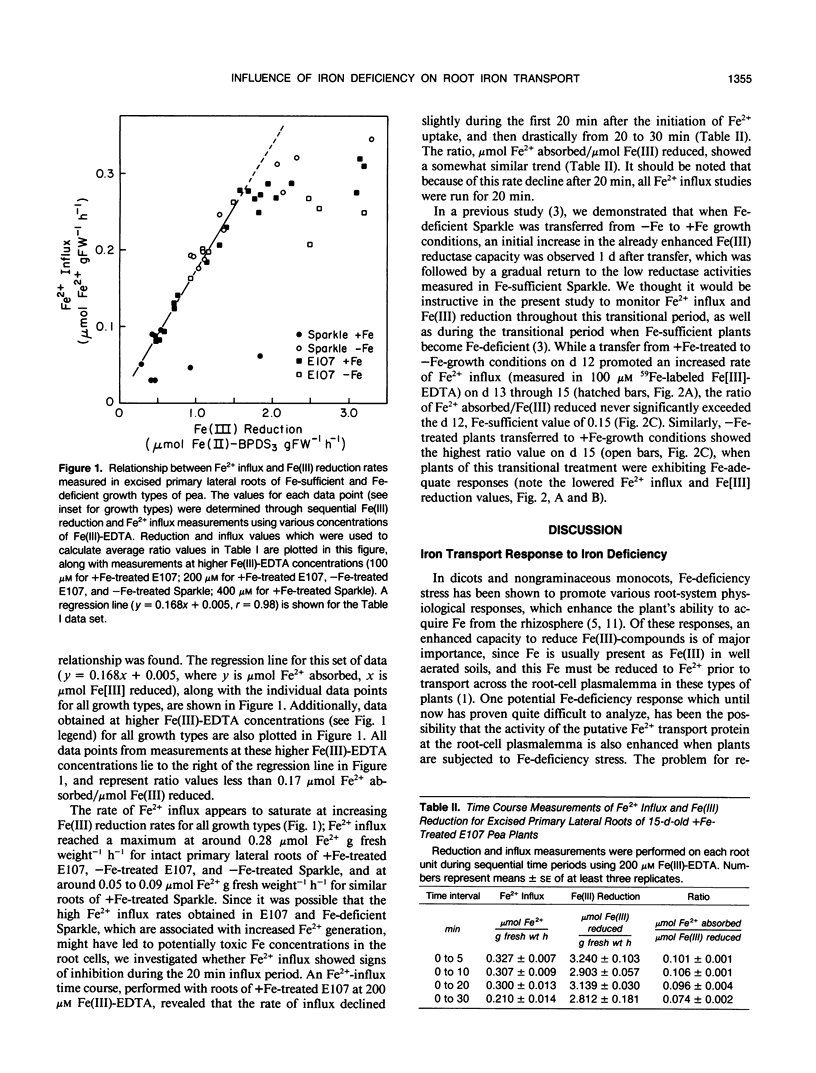
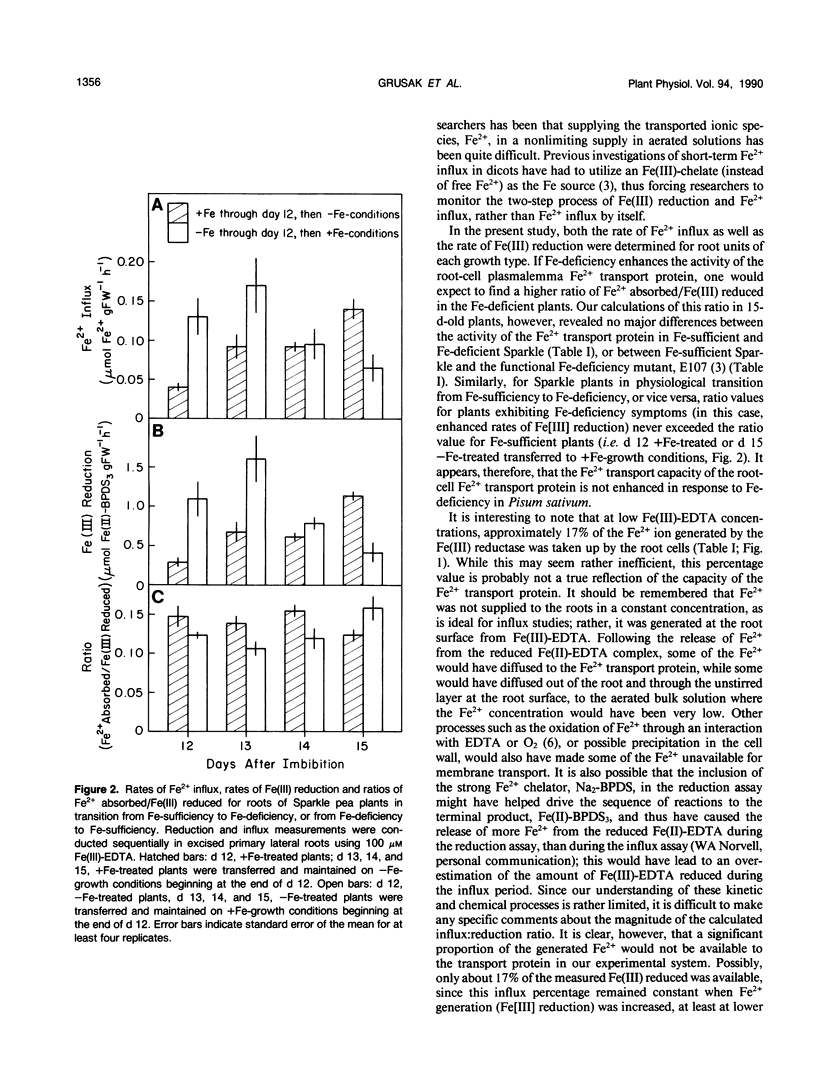
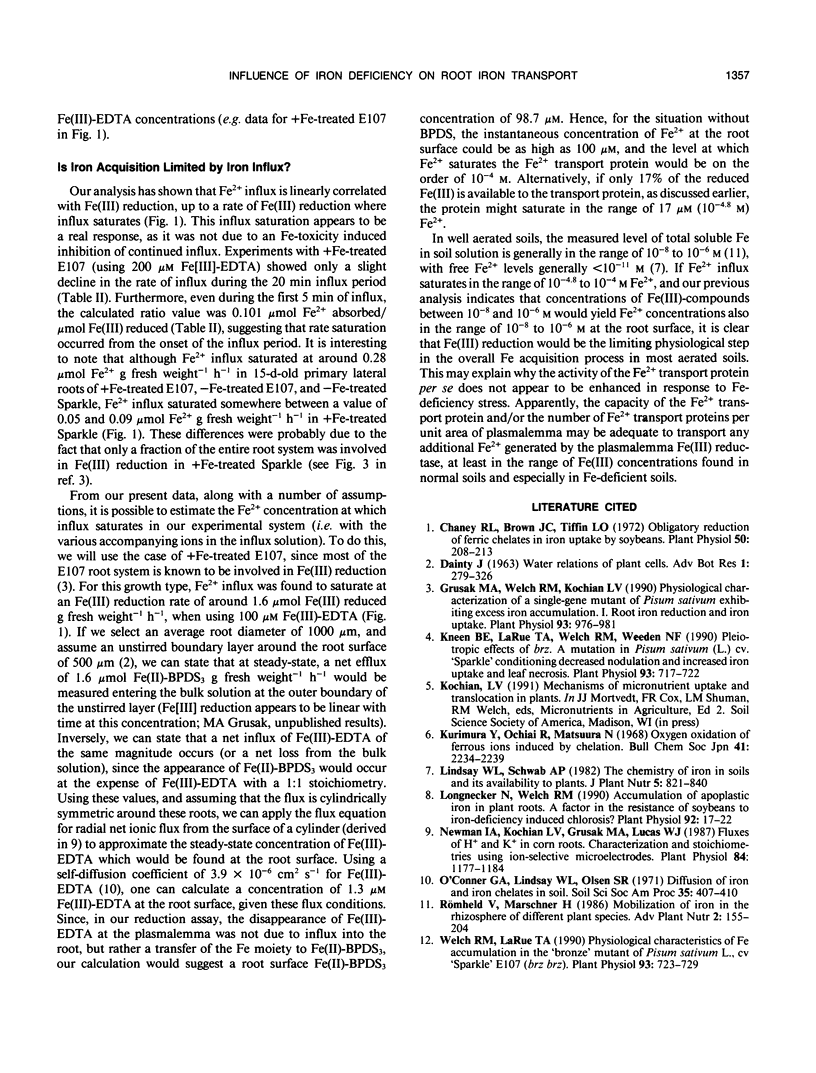
Selected References
These references are in PubMed. This may not be the complete list of references from this article.
- Chaney R. L., Brown J. C., Tiffin L. O. Obligatory reduction of ferric chelates in iron uptake by soybeans. Plant Physiol. 1972 Aug;50(2):208–213. doi: 10.1104/pp.50.2.208. [DOI] [PMC free article] [PubMed] [Google Scholar]
- Grusak M. A., Welch R. M., Kochian L. V. Physiological Characterization of a Single-Gene Mutant of Pisum sativum Exhibiting Excess Iron Accumulation: I. Root Iron Reduction and Iron Uptake. Plant Physiol. 1990 Jul;93(3):976–981. doi: 10.1104/pp.93.3.976. [DOI] [PMC free article] [PubMed] [Google Scholar]
- Kneen B. E., Larue T. A., Welch R. M., Weeden N. F. Pleiotropic Effects of brz: A Mutation in Pisum sativum (L.) cv ;Sparkle' Conditioning Decreased Nodulation and Increased Iron Uptake and Leaf Necrosis. Plant Physiol. 1990 Jun;93(2):717–722. doi: 10.1104/pp.93.2.717. [DOI] [PMC free article] [PubMed] [Google Scholar]
- Longnecker N., Welch R. M. Accumulation of apoplastic iron in plant roots : a factor in the resistance of soybeans to iron-deficiency induced chlorosis? Plant Physiol. 1990 Jan;92(1):17–22. doi: 10.1104/pp.92.1.17. [DOI] [PMC free article] [PubMed] [Google Scholar]
- Newman I. A., Kochian L. V., Grusak M. A., Lucas W. J. Fluxes of h and k in corn roots : characterization and stoichiometries using ion-selective microelectrodes. Plant Physiol. 1987 Aug;84(4):1177–1184. doi: 10.1104/pp.84.4.1177. [DOI] [PMC free article] [PubMed] [Google Scholar]
- Welch R. M., Larue T. A. Physiological Characteristics of Fe Accumulation in the ;Bronze' Mutant of Pisum sativum L., cv ;Sparkle' E107 (brz brz). Plant Physiol. 1990 Jun;93(2):723–729. doi: 10.1104/pp.93.2.723. [DOI] [PMC free article] [PubMed] [Google Scholar]


